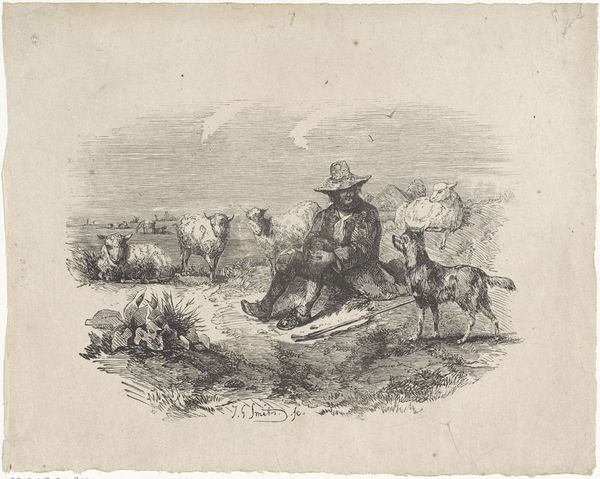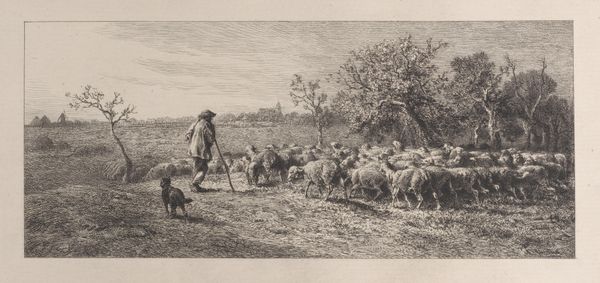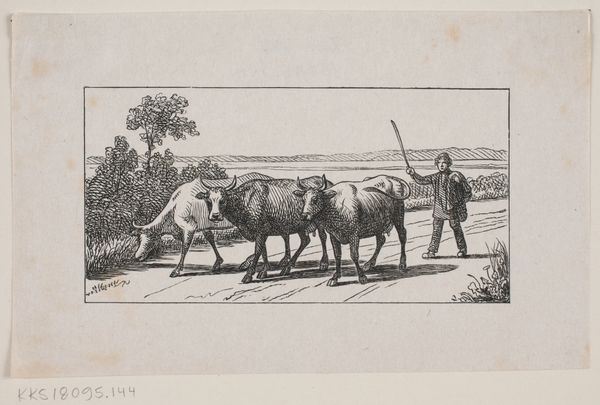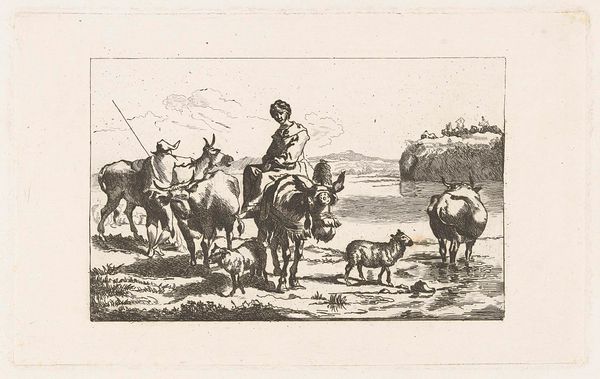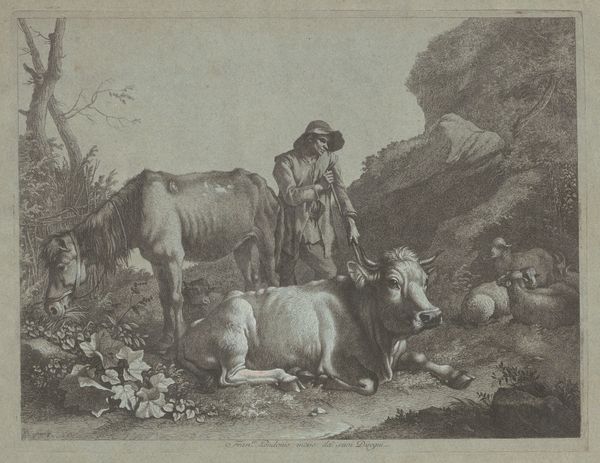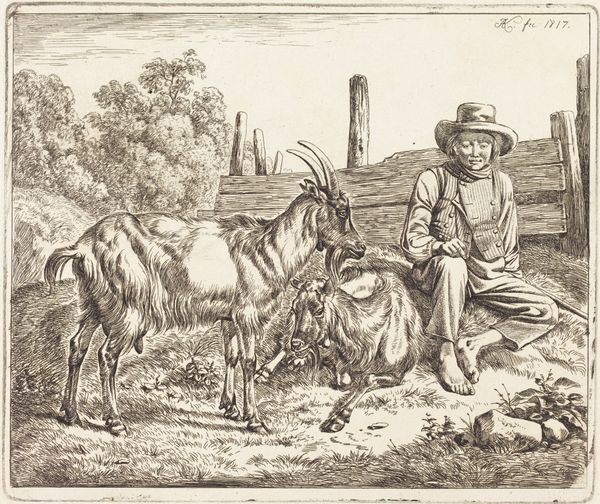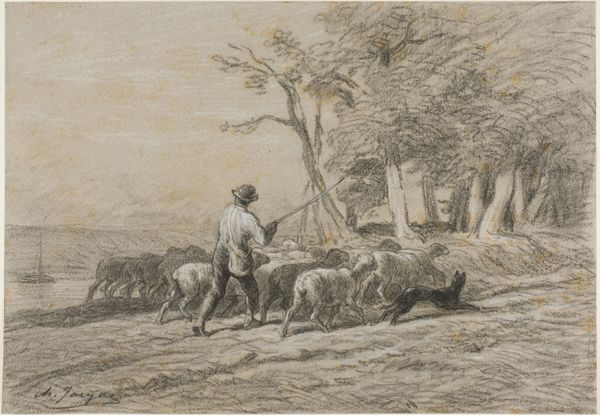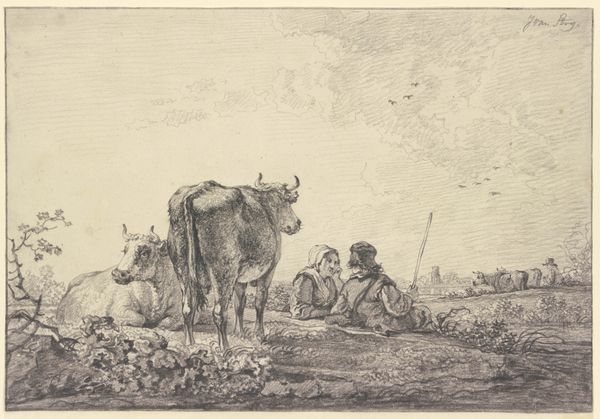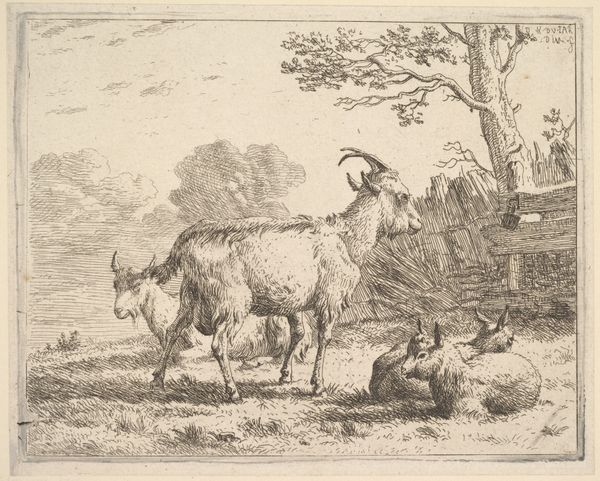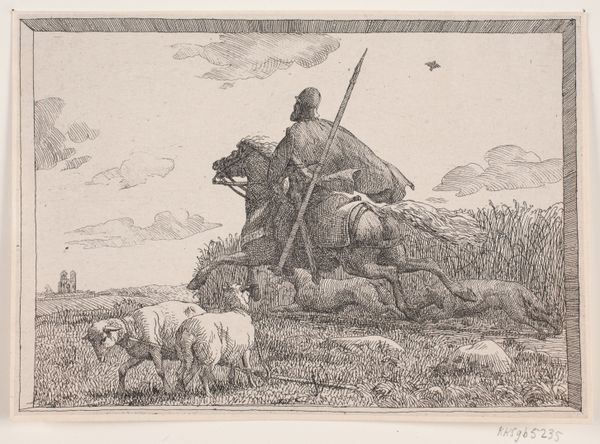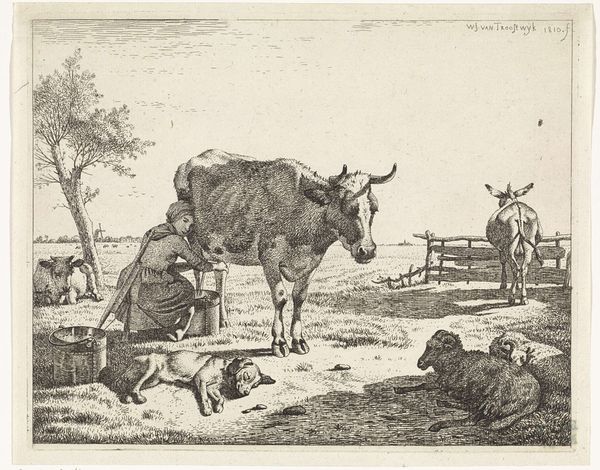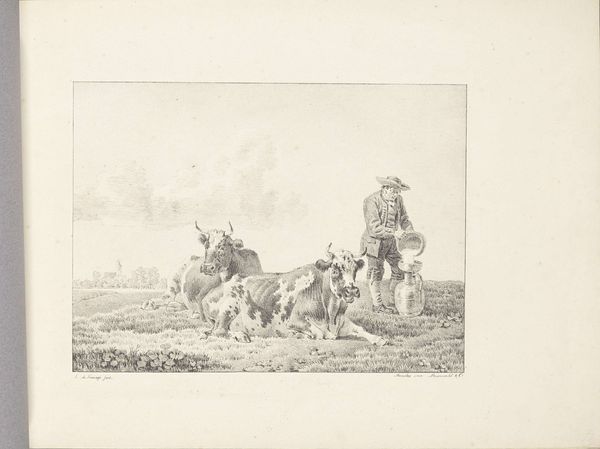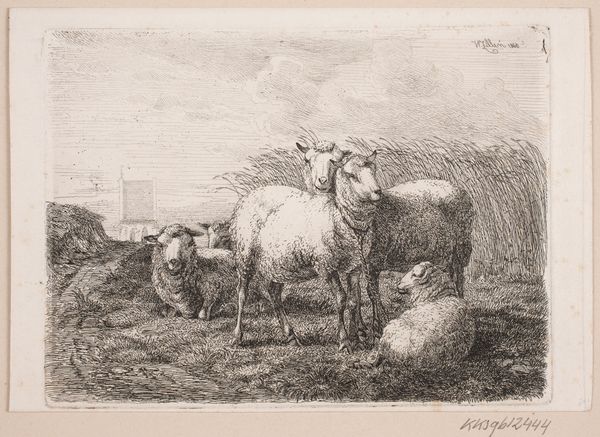
print, etching
# print
#
etching
#
landscape
#
figuration
#
realism
Dimensions: plate: 5.5 × 8.7 cm (2 3/16 × 3 7/16 in.) sheet: 21 × 32 cm (8 1/4 × 12 5/8 in.)
Copyright: National Gallery of Art: CC0 1.0
Curator: This is Adolphe Appian’s etching, "Shepherdess," created in 1861. Editor: The immediate feeling I get is one of solitude, reinforced by the spare landscape and the fine lines of the etching. Curator: Appian's work reflects a key moment of industrialization and agrarian shifts, and it's essential to consider the representation of rural labor here. The figure’s posture, the burden on her back, suggests more than just a picturesque scene. It invites dialogue on the social realities of shepherdesses and women workers of that era. Editor: Indeed. The marks from the etching plate suggest a repetitive, almost industrial, process. And it mirrors, perhaps, the shepherdess’s own daily labor – a repetition of simple actions dictated by the animals and the landscape. Consider how Appian translates texture into lines – the wool of the sheep, the rough ground, even the sky – each element crafted from specific actions of applying acid to the plate. Curator: Looking closer, you realize there's so much detail packed in! Note the social construction of gender; the woman's anonymity conveyed through her covered figure. Are we truly appreciating or romanticizing these individuals through landscape art? Editor: The choice of etching, too, feels crucial. This isn’t a grand, romanticized painting. It’s reproducible, accessible. The labor of the artist echoes the labor of the shepherdess – a physical, demanding practice. The availability of such images through prints also enabled their dissemination and popular consumption. Curator: Right, which underscores the intersections of class and labor representations, even consumption of artistic labor, and calls to re-examine it from our current standpoint in culture. Editor: Absolutely. Examining these lines brings forth the very nature of human exertion rendered visible within the matrix of printmaking itself. Curator: I am thankful for the prompt to reconsider the silent stories interwoven with visual texture and form. Editor: Agreed, it is always enlightening to examine not only what the artwork depicts, but the how as well.
Comments
No comments
Be the first to comment and join the conversation on the ultimate creative platform.
